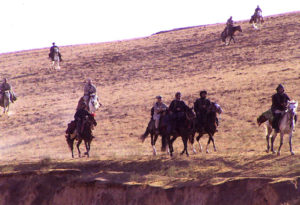Typhoons and Hurricanes

Like everyone else, I’m watching the news as Hurricane Harvey reaches category four intensity tonight. It will reach the coast of Texas around midnight, August 25th. My thoughts are with everyone in the affected region. I also hope that people are paying much closer attention to the news than I was when Typhoon Hato reached Hong Kong this Wednesday. I was staying at a hotel in Hong Kong, and was not following events, because I had been busy traveling back from Shenzhen. When I awoke in the morning I was surprised to see the rain coming down in buckets, but just thought it was a summer storm. I then went down the stairs, only to find myself confused by the shutters that had been installed on the main lobby doors at the Metropark Hotel. I went out another door, and was puzzled to see the sidewalks without pedestrians, the streets without cars, and businesses closed. When I saw that the windows up and down the street were taped with X’s, I realized what was happening.
Typhoon Hato skirted Hong Kong but hit Macau hard. Still, even in Hong Kong it was an impressive sight from the hotel’s rooftop. A burst of intense wind would pass through, whipping the palm trees back and forth. Clouds of leaves would hurl through the air, as they were sucked hundreds of feet into the sky. The rain would pour sideways. Then, I don’t know why, suddenly it would be dead calm. At one point I found myself watching a flock of birds, desperately trying to fly into the wind to avoid being sucked up into the hills. They would gain a little space, they be blown helplessly back. By late afternoon the worst was over, although heavy rains continued for hours. …



![This letter written by Mi Fei. By 米芾(べい ふつ、1051年 - 1107年、中国の北宋末の文学者・書家・画家) [Public domain], via Wikimedia Commons](https://www.introtoglobalstudies.com/wp-content/uploads/2017/01/This_Letter_written_by_Mi_Fei.jpg)
![Marine gets his wounds treated during operations in Huế City, 1968. By Undetermined U.S military photographer [Public domain], via Wikimedia Commons . By Undetermined U.S military photographer [Public domain], via Wikimedia Commons](http://introglobal.wpengine.com/wp-content/uploads/2016/06/1024px-OperationHueCity1967wounded-300x210.jpg)